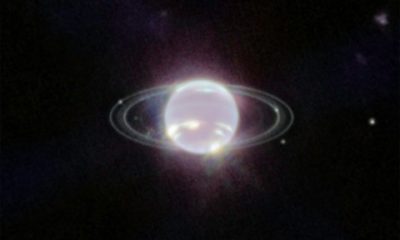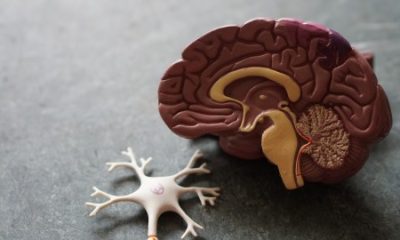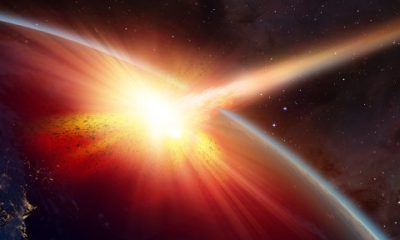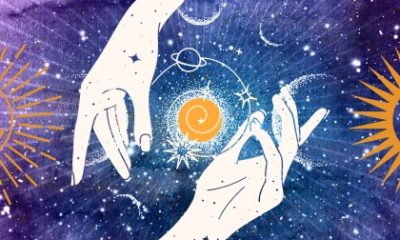Technology
Scientists solve the reason why Jupiter has no rings
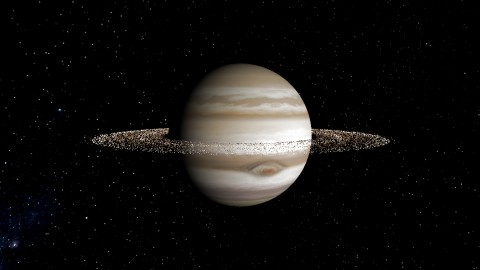
Turns out Jupiter was meant to have rings much bigger than Saturn if not for its giant moons.
A new study has found that the gas giant’s large moons destroy any rings before they have a chance to form.
‘We found that the Galilean moons of Jupiter, one of which is the largest moon in our solar system, would very quickly destroy any large rings that might form,’ said UCR astrophysicist Stephen Kane, who led the research.
As a result, it is unlikely that Jupiter had large rings at any point in its past.
Massive planets like Jupiter — the biggest planet in our solar system — form massive moons, which prevent them from having substantial rings.
And because of its size, Jupiter would have also had larger, more spectacular rings than Saturn.
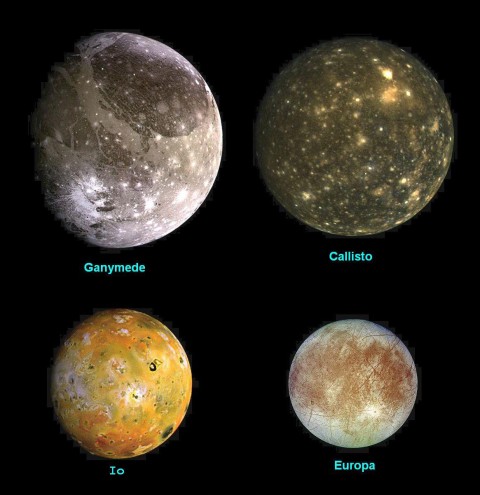
The Galilean moons of Jupiter.
To understand the reason Jupiter currently looks the way it does, Kane and his graduate student Zhexing Li ran a dynamic computer simulation accounting for the orbits of Jupiter’s four main moons, as well as the orbit of the planet itself, and information about the time it takes for rings to form.
The results of the study, soon to be published in the Planetary Science journal, explains why the gigantic planet has no rings.
Jupiter’s neighbour Saturn’s rings, are largely made of ice, some of which may have come from comets, which are also largely made of ice. If moons are massive enough, their gravity can toss the ice out of a planet’s orbit, or change the orbit of the ice enough so that it collides with the moons.
In fact, all four giant planets in our solar system — Saturn, Neptune, Uranus and Jupiter — do have rings. However, both Neptune and Jupiter’s rings are so flimsy they’re difficult to view with traditional stargazing instruments.
Coincidentally, some of the recent images from the newly commissioned James Webb Space Telescope included pictures of Jupiter, in which the faint rings are visible.

Jupiter and some of its moons with faint ring visible.
‘We didn’t know these ephemeral rings existed until the Voyager spacecraft went past because we couldn’t see them,’ Kane said.
Uranus has rings that are aren’t as large but are more substantial than Saturn’s. Going forward, Kane intends to run simulations of the conditions on Uranus to see what the lifetime of that planet’s rings might be.
Some astronomers believe Uranus is tipped over on its side as the result of a collision the planet had with another celestial body. Its rings could be the remains of that impact.
Beyond their beauty, rings help astronomers understand the history of a planet, because they offer evidence of collisions with moons or comets that may have happened in the past. The shape and size of the rings, as well as the composition of the material, offers an indication about the type of event that formed them.
‘For us astronomers, they are the blood spatter on the walls of a crime scene. When we look at the rings of giant planets, it’s evidence something catastrophic happened to put that material there,’ said Kane.

-

 Technology2 years ago
Technology2 years agoVoIP Number: Everything You Need To Know
-

 Music2 months ago
Music2 months ago[Music] Gnash Ft Olivia O’Brien – I Hate you, I Love you
-

 Music1 month ago
Music1 month ago[INSTRUMENTAL] John Legend – All Of Me
-

 Music2 months ago
Music2 months agoAlan Walker – Faded [INSTRUMENTAL]
-

 Music1 month ago
Music1 month ago[Video] 21 Savage ft. Offset & Metro Boomin – Rap Saved Me
-

 Music2 months ago
Music2 months ago[Instrumental] Wiz Khalifa – See You Again ft. Charlie Puth
-

 ANE Stories4 months ago
ANE Stories4 months ago[STORY] AMAKA THE LESBIAN (Complete Episodes)
-

 Music2 months ago
Music2 months ago[Music] Akon – Sorry Blame It On Me






